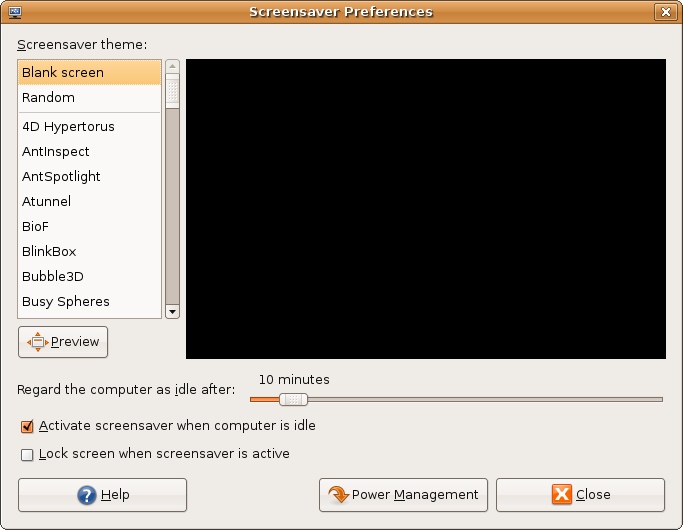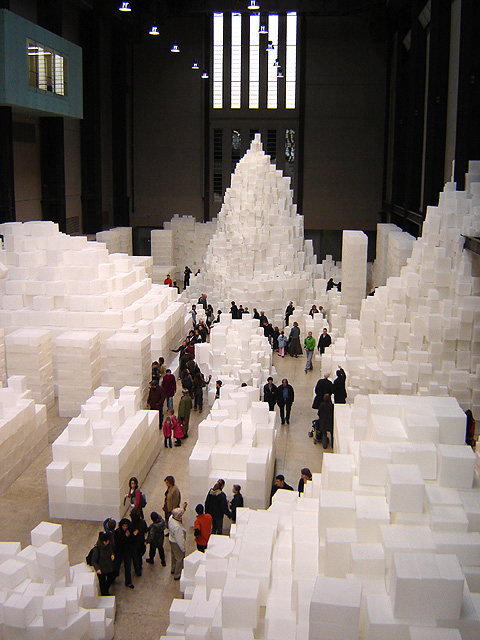|
Slideshow
A slide show, or slideshow, is a presentation of a series of still images ( slides) on a projection screen or electronic display device, typically in a prearranged sequence. The changes may be automatic and at regular intervals or they may be manually controlled by a presenter or the viewer. Slide shows originally consisted of a series of individual photographic slides projected onto a screen with a slide projector, as opposed to the video or computer-based visual equivalent, in which the slides are not individual physical objects. A slide show may be a presentation of images purely for their own visual interest or artistic value, sometimes unaccompanied by description or text, or it may be used to clarify or reinforce information, ideas, comments, solutions or suggestions which are presented verbally. Slide shows are sometimes still conducted by a presenter using an apparatus such as a carousel slide projector or an overhead projector, but now the use of an electronic video ... [...More Info...] [...Related Items...] OR: [Wikipedia] [Google] [Baidu] |
Microsoft PowerPoint
Microsoft PowerPoint is a presentation program, developed by Microsoft. It was originally created by Robert Gaskins, Tom Rudkin, and Dennis Austin at a software company named Forethought, Inc. It was released on April 20, 1987, initially for Macintosh computers only. Microsoft acquired PowerPoint for about $14 million three months after it appeared. This was Microsoft's first significant acquisition, and Microsoft set up a new business unit for PowerPoint in Silicon Valley where Forethought had been located. PowerPoint became a component of the Microsoft Office suite, first offered in 1989 for Macintosh and in 1990 for Microsoft Windows, Windows, which bundled several Microsoft apps. Beginning with PowerPoint 4.0 (1994), PowerPoint was integrated into Microsoft Office development, and adopted shared common components and a converged user interface. PowerPoint's market share was very small at first, prior to introducing a version for Microsoft Windows, but grew rapidly wit ... [...More Info...] [...Related Items...] OR: [Wikipedia] [Google] [Baidu] |
Carousel Slide Projector
A carousel slide projector is a slide projector that uses a rotary tray to store slides, used to project slide photographs and to create slideshows. It was first patented on May 11, 1965, by David E. Hansen of Fairport, New York. Hansen was an industrial designer at the Eastman Kodak Company. A patent for the rotary tray was granted in 1966 after a 1962 application by the Eastman Kodak Company. The original concept for the carousel slide projector is credited to Italian-American Louis Misuraca, who brought his design to the Kodak company, and sold it for a lump sum. Kodak released their first Carousel projector, the Model 550, in 1961 and sold it until 1966. The 1963 Carousel Model S (Carousel-S), a professional model sold only in Germany, was designed by Hans Gugelot and Reinhold Häcker for Kodak AG in Stuttgart and is in the permanent collection of the Museum of Modern Art. Physical form A separate, circular tray holds several (usually 80 or 140) 35mm slides, and is filled w ... [...More Info...] [...Related Items...] OR: [Wikipedia] [Google] [Baidu] |
Presentation Program
In computing, a presentation program (also called presentation software) is a software package used to display information in the form of a slide show. It has three major functions: * an editor that allows text to be inserted and formatted * a method for inserting and manipulating graphic images and media clips * a slide-show system to display the content Presentation software can be viewed as enabling a functionally-specific category of electronic media, with its own distinct culture and practices as compared to traditional presentation media (such as blackboards, whiteboards and flip charts). Presentations in this mode of delivery have become pervasive in many aspects of business communication, especially in business planning, as well as in academic-conference and professional conference settings, and in the knowledge economy generally, where ideas are a primary work output. Presentations may also feature prominently in political settings, especially in workplace ... [...More Info...] [...Related Items...] OR: [Wikipedia] [Google] [Baidu] |
Film
A film, also known as a movie or motion picture, is a work of visual art that simulates experiences and otherwise communicates ideas, stories, perceptions, emotions, or atmosphere through the use of moving images that are generally, since the 1930s, synchronized with sound and (less commonly) other sensory stimulations. Etymology and alternative terms The name "film" originally referred to the thin layer of photochemical emulsion on the celluloid strip that used to be the actual medium for recording and displaying motion pictures. Many other terms exist for an individual motion-picture, including "picture", "picture show", "moving picture", "photoplay", and "flick". The most common term in the United States is "movie", while in Europe, "film" is preferred. Archaic terms include "animated pictures" and "animated photography". "Flick" is, in general a slang term, first recorded in 1926. It originates in the verb flicker, owing to the flickering appearance of early films ... [...More Info...] [...Related Items...] OR: [Wikipedia] [Google] [Baidu] |
Slide Projector
A slide projector is an optical device for projecting enlarged images of photographic slides onto a screen. Many projectors have mechanical arrangements to show a series of slides loaded into a special tray sequentially. 35 mm slide projectors, direct descendants of the larger-format magic lantern, first came into widespread use during the 1950s for slide shows as home entertainment, and for use by educational and other institutes. Reversal film created a small positive projectable image rather than the negatives used since the early days of photography; photography now produced 35mm directly viewable small colour slides, rather than large monochrome negatives. The slide images were too small for unaided viewing, and required enlargement by a projector or enlarging viewer. Photographic film slides and projectors have been replaced by image files on digital storage media shown on a projection screen by using a video projector, or displayed on a large-screen video ... [...More Info...] [...Related Items...] OR: [Wikipedia] [Google] [Baidu] |
A Picture Is Worth A Thousand Words
"A picture is worth a thousand words" is an adage in multiple languages meaning that complex and sometimes multiple ideas can be conveyed by a single still image, which conveys its meaning or essence more effectively than a mere verbal description. History In March 1911, the Syracuse Advertising Men's Club held a banquet to discuss journalism and publicity. This was reported in two articles. In an article in The Post-Standard covering this event, the author quoted Arthur Brisbane (not Tess Flanders as previously reported here and elsewhere) as saying: "Use a picture. It's worth a thousand words." In an article in the Printers' Ink, the same quote is attributed to Brisbane. A similar phrase, "One Look Is Worth A Thousand Words", appears in a 1913 newspaper advertisement for the Piqua Auto Supply House of Piqua, Ohio. Early use of the exact phrase appears in a 1918 newspaper advertisement for the '' San Antonio Light'', which says: One of the Nation's Greatest Editors Says: ... [...More Info...] [...Related Items...] OR: [Wikipedia] [Google] [Baidu] |
Screensaver
A screensaver (or screen saver) is a computer program that blanks the display screen or fills it with moving images or patterns when the computer has been idle for a designated time. The original purpose of screensavers was to prevent phosphor screen burn-in, burn-in on Cathode-ray tube, CRT or plasma display, plasma computer monitors (hence the name). Though most modern monitors are not susceptible to this issue (with the notable exception of OLED technology, which has individual pixels vulnerable to burnout), screensaver programs are still used for other purposes. Screensavers are often set up to offer a basic layer of computer security, security by requiring a password to re-access the device. Some screensaver programs also use otherwise-idle computer resources to do useful work, such as processing for volunteer computing projects. As well as computers, modern television operating systems, media players, and other digital entertainment systems may include optional screensavers ... [...More Info...] [...Related Items...] OR: [Wikipedia] [Google] [Baidu] |
Museum
A museum is an institution dedicated to displaying or Preservation (library and archive), preserving culturally or scientifically significant objects. Many museums have exhibitions of these objects on public display, and some have private collections that are used by researchers and specialists. Museums host a much wider range of objects than a library, and they usually focus on a specific theme, such as the art museums, arts, science museums, science, natural history museums, natural history or Local museum, local history. Public museums that host exhibitions and interactive demonstrations are often tourist attractions, and many draw large numbers of visitors from outside of their host country, with the List of most-visited museums, most visited museums in the world attracting millions of visitors annually. Since the establishment of Ennigaldi-Nanna's museum, the earliest known museum in ancient history, ancient times, museums have been associated with academia and the preserva ... [...More Info...] [...Related Items...] OR: [Wikipedia] [Google] [Baidu] |
Installation Art
Installation art is an artistic genre of three-dimensional works that are often site-specific art, site-specific and designed to transform the perception of a space. Generally, the term is applied to interior spaces, whereas exterior interventions are often called public art, land art or art intervention; however, the boundaries between these terms overlap. History Installation art can be either temporary or permanent. Installation artworks have been constructed in exhibition spaces such as museums and galleries, as well as public and private spaces. The genre incorporates a broad range of everyday and natural materials, which are often chosen for their ":wikt:evocative, evocative" qualities, as well as new media such as video, sound, performance, immersive virtual reality and the internet. Many installations are Site-Specific Art, site-specific in that they are designed to exist only in the space for which they were created, appealing to qualities evident in a Three-dimension ... [...More Info...] [...Related Items...] OR: [Wikipedia] [Google] [Baidu] |
David Byrne (musician)
David Byrne (; born May 14, 1952) is an American musician, writer, visual artist, and filmmaker. He was a founding member, principal songwriter, lead singer, and guitarist of the American new wave band Talking Heads. Byrne has released solo recordings and worked with various media including film, photography, opera, fiction, and non-fiction. He has received an Academy Award, a Grammy Award, a Special Tony Award, and a Golden Globe Award, and he is an inductee to the Rock and Roll Hall of Fame as part of Talking Heads. Early life and education David Byrne was born on May 14, 1952 in Dumbarton, Dunbartonshire, Scotland, the elder of two children born to Tom (from Lambhill, Glasgow) and Emma Byrne. Byrne's mother was Presbyterian and his father Catholic. Two years after his birth, the family moved to Canada, settling in Hamilton, Ontario. The family left Scotland in part because there were few jobs requiring his father's engineering skills and in part because of the tensions i ... [...More Info...] [...Related Items...] OR: [Wikipedia] [Google] [Baidu] |
Reversal Film
In photography, reversal film or slide film is a type of photographic film that produces a positive image on a transparent base. Instead of negatives and prints, reversal film is processed to produce transparencies or diapositives (abbreviated as "diafilm" or "dia" in some languages like German, Romanian or Hungarian). Reversal film is produced in various sizes, from 35 mm to roll film to 8×10 inch sheet film. A slide is a specially mounted individual transparency intended for projection onto a screen using a slide projector. This allows the photograph to be viewed by a large audience at once. The most common form is the 35 mm slide, with the image framed in a 2×2 inch cardboard or plastic mount. Some specialized labs produce photographic slides from digital camera images in formats such as JPEG, from computer-generated presentation graphics, and from a wide variety of physical source material such as fingerprints, microscopic sections, paper documents, astr ... [...More Info...] [...Related Items...] OR: [Wikipedia] [Google] [Baidu] |










